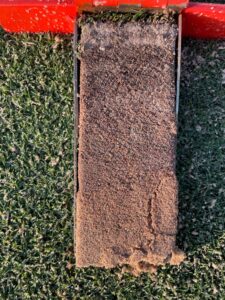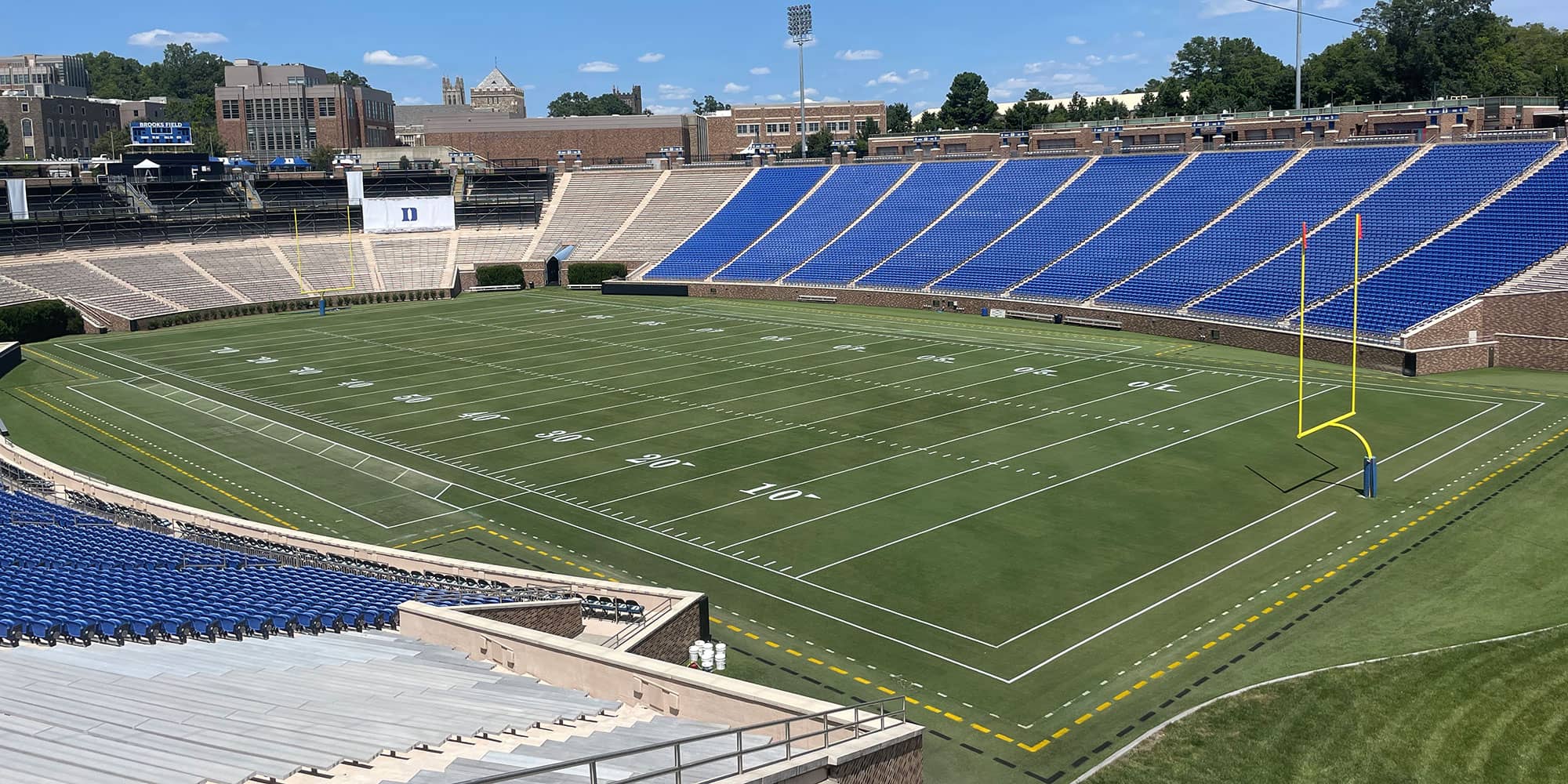
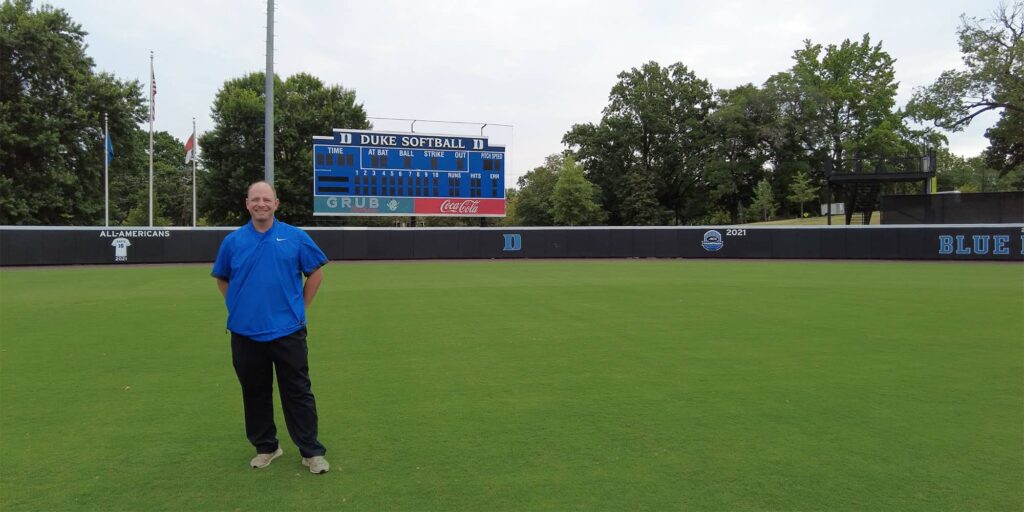
Expert Tips from Duke’s Grounds Crew on Greening Your Sports Turf
Duke University’s Brooks Field at Wallace Wade Stadium was named the Sports Field Management Association’s 2023 College Football Field of the Year, showcasing the grounds team’s expertise in bermudagrass management. As the college football season approaches, Ian Christie, Senior Superintendent for Landscape Services in Duke Facilities Management, sat down with Sod Solutions to share his tips for sports managers on greening up their turf.
The Importance of Green-Up
Christie emphasized that early greening up means sports teams play on active grass, which has the ability to repair itself and withstand traffic. “Once temperatures rise enough, the fields are farther ahead and can actually begin to heal overworn areas.”
Green-Up Strategies
Christie recommends using weather to guide the selection of turfgrass varieties and practices such as fertilization, soil health management, watering, aeration and overseeding to quickly green up bermudagrass.
“Heat specifically is the driver of the metabolic processes of a plant. Once you hit the needed temperature for the variety as they do vary, I begin to lightly fertilize with attention to cellular growth and strength. I like to build the foundation of the plant first. Then as temperature hits the growth stage, it’s time to hit the gas. However, there is no point in pushing the gas if the temperature is going to limit you,” Christie said.
When it comes to balancing the need for rapid greening with long-term turf health and sustainability, Christie said, “I think early green-up, although sometimes risky, can be better with respect to sustainability. With fields greening up earlier, it means we have more growing degree days to heal over and fill in prior to summer and fall traffic.” As a result, they don’t have to over-fertilize to really push fields too much.
In August, the Duke Grounds Crew posted this vibrant photo of Brooks Field on X. Their team is continuously working hard to keep their fields in pristine conditions for their college athletes.
Avoiding Common Green-Up Mistakes
Christie notes that sports turfgrass managers often mistakenly believe they can force grass to behave in specific ways. “I like to tell people that it’s better if we guide the turfgrass to do certain things. Without the temperatures to begin metabolic activity in a plant, there is nothing culturally or fertility-wise we can do to alter that. Manipulating temperature is step one.”
Managing Ryegrass
Christie explained that removing ryegrass depends on the sport and the health of the underlying bermudagrass. “With our newer varieties of bermudagrass, we have begun this process earlier as the bermudagrass is usually farther ahead.”
Overseeding for Different Seasons
Christie said overseeding is necessary for January sports because they haven’t used bermudagrass that will remain green in those temperatures. “For fall sports, we like not to overseed, as it is relatively easier to hold color and temperatures deeper into the fall. Soil temperatures are especially warmer and deeper and are the last to cool off,” he said.
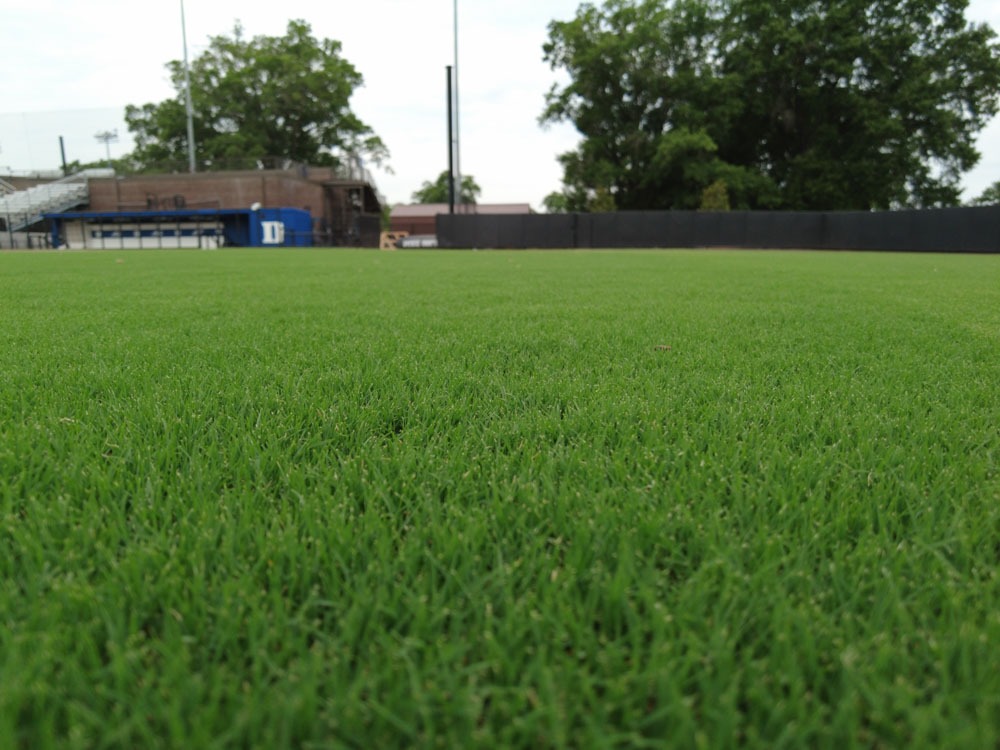
Duke Softball
Latitude 36® Bermudagrass Maintenance
Latitude 36® Bermudagrass is used on Brooks Field and Duke’s softball field. Christie said Latitude 36 holds its color much longer into the fall, aiding recovery during the football season.
“We love the texture of Latitude 36. The combination of density and very fine leaf texture makes this grass a showstopper. It responds very well to fertility and aggressive cultural practices,” he added.
Click here to hear what Christie had to say in Spring 2022 about their selection for Latitude 36 to replace 419 Bermudagrass for the Softball Stadium and their satisfaction with this grass variety.
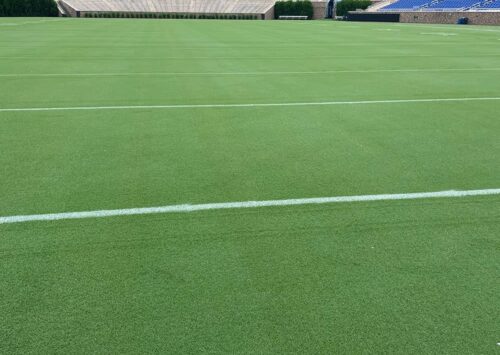
Latitude 36® Bermudagrass at Brooks Field.
The Advantage of Cold-Tolerant Bermuda
On the benefits of cold-tolerant bermudagrass like Latitude 36 for their fields in Durham, Christie noted, “Anywhere in the transition zone is a very tough area to grow grass. It gets mighty warm for cool season grass, and cold with wild spring swings for bermudagrass. We find that the cold tolerance just gives us a head start in the spring. This head start helps us use less ryegrass and less sod. The benefits are immense.”
Christie’s Journey in Turf Management
With 11 years at Duke, Christie discovered his passion for turf management working on fields and golf courses in high school. “I always loved taking care of fields early on. It wasn’t until after college that I chased after my passion and was determined to turn it into a career,” he shared.
He graduated with a computer engineering degree but preferred working outdoors in sports. He pursued that career by returning to school for a Master’s in sports management and a certificate in turfgrass. He also attributes his success to surrounding himself with great turf managers and soaking up their knowledge.
If you’re ready to convert your sports fields to a superior bermudagrass for fall color retention, visit Latitude36Bermuda.com. To see other sports fields and golf courses using Latitude 36 Bermudagrass, click here.
Hear Christie and Duke’s Sports Turf Manager, Cooper Boyce, express their gratitude and excitement for being awarded and recognized for having the best college football field of the year by their peers in this video below:
This article was written by Cecilia Johnson.

